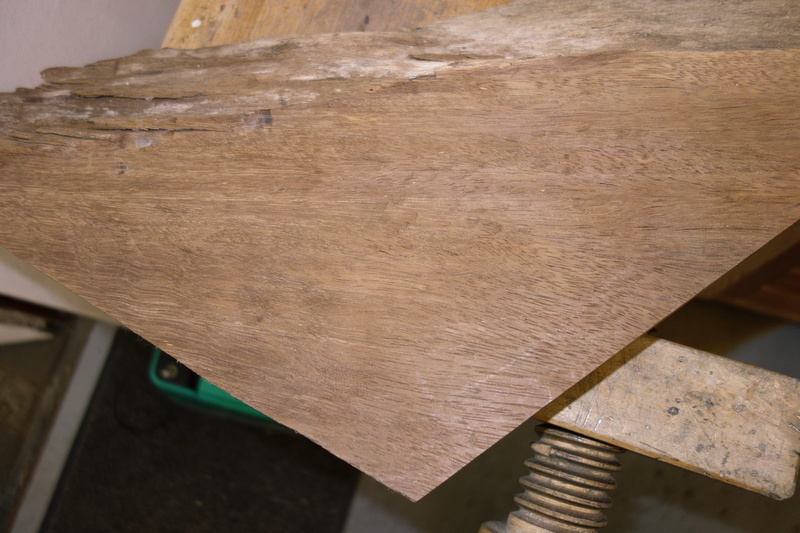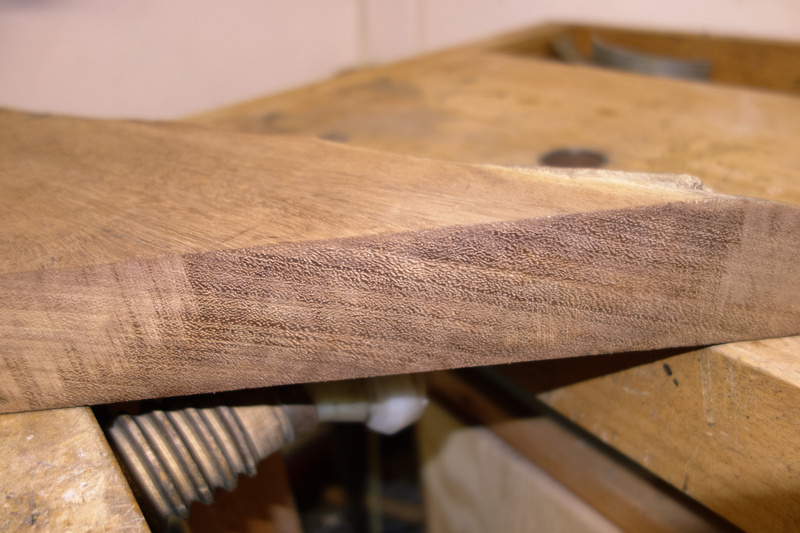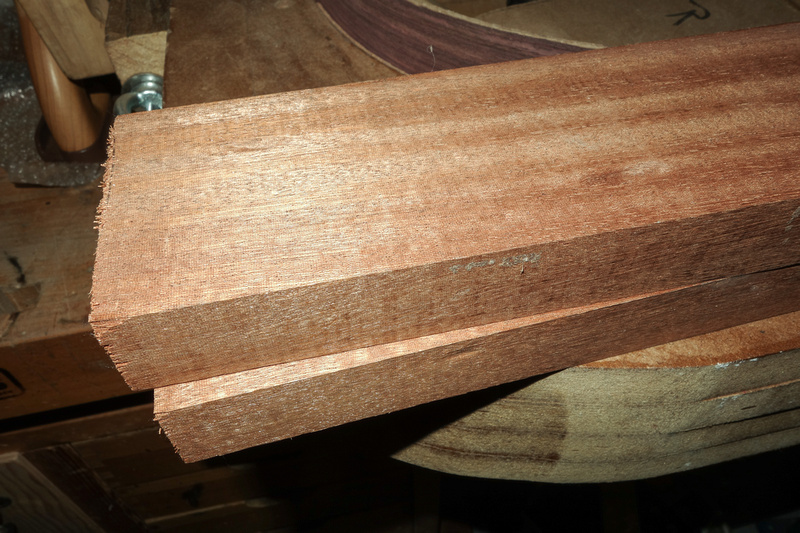
 |
|
#16
|
|||
|
|||
|
Quote:
|
|
#17
|
|||
|
|||
|
Not if you screw it or make a bolt on.
 I guess you have a point... though how important is the glue on a well fitted dovetail. I used to put 2 drops on ethier side. I guess you have a point... though how important is the glue on a well fitted dovetail. I used to put 2 drops on ethier side.
__________________
The standard you walk past is the standard you accept. |
|
#18
|
|||
|
|||
|
I've actually seen neck blocks glued with the end grain facing the rims on guitars that had dovetail joints. I doubt they would be a problem if the joint was a good fit. How often do the rims let go on a Spanish heel?
__________________
The standard you walk past is the standard you accept. |
|
#19
|
|||
|
|||
|
I´m going to have the grain horizontally in the same direction as the sides
but glue on the inside surface a thin slice of wood with its grain running vertical - kind of lamination...  Btw,I will use a bolt-on neck. Thanks for sharing your experience!
__________________
Thanks!  Martin D28 (1973) 12-string cutaway ...finished ;-) Hoyer 12-string (1965) Yamaha FG-340 (1970) Yamaha FG-512 (ca. 1980) D.Maurer 8-string baritone (2013-2014) and 4 electric axes |
|
#20
|
|||
|
|||
|
Excuse me for posting twice!
Or can I delete one?
__________________
Thanks!  Martin D28 (1973) 12-string cutaway ...finished ;-) Hoyer 12-string (1965) Yamaha FG-340 (1970) Yamaha FG-512 (ca. 1980) D.Maurer 8-string baritone (2013-2014) and 4 electric axes |
|
#21
|
|||
|
|||
|
Quote:
I frequently use riftsawn wood for the neck block, so it's either side grain (somewhere between edge grain and face grain) or end grain.
__________________
Rodger Knox, PE 1917 Martin 0-28 1956 Gibson J-50 et al |
|
#22
|
|||
|
|||
|
Hi arie, over here we always call it a cleat ...not a particularly recommended procedure on wide panels, because of differential expansion , but on narrow pieces .. why not ?
|
|
#23
|
|||
|
|||
|
Quote:
 if you look at a fleta you'll see how he built the neck block and the tail block. vertical grained center section set perpendicular to the sides and capped off with a m/t'd piece on each end with the grain set parallel to the sides. very, very simple. courtnall has fleta plans describing this method in his book "building master guitars". |
|
#24
|
|||
|
|||
|
Quote:
The ultimate way to make neck blocks, for sure ... Tail blocks ...??? maybe not so much ...the tail block doesn't need the same gluing area as the neck block, and is in no way under the same stress ...all the tail block does is provide a gluing area for the sides and the end graft. The tail block can be bevelled to provide the same gluing area as the kerfed lining, and there is no technical reason why there should be any more gluing area than this, IMO. From a mechanical point of view, a birch ply tail block works just as well (and maybe even better) than a solid block ...aesthetically, there will undoubtedly be carpers and cavillers ... |
|
#25
|
|||
|
|||
|
Tail blocks don't have much static stress like the headblock, but are subject to splitting from an impact to the endpin. I laminate 2 pieces with grain at 90°, the horizontal grain gets glued to the sides.
__________________
Rodger Knox, PE 1917 Martin 0-28 1956 Gibson J-50 et al |
|
#26
|
|||
|
|||
|
I found two logs of mahogany in my garage being there for some decade.
I think of making the neck block (inside the git) of one of them. The grain isn´t all straight but in a way curly. Could I use the wood anyway? I´m making a bolt on neck. Which of both hogs would you take?  The side:  Or those two glued together to get the needed thickness: 
__________________
Thanks!  Martin D28 (1973) 12-string cutaway ...finished ;-) Hoyer 12-string (1965) Yamaha FG-340 (1970) Yamaha FG-512 (ca. 1980) D.Maurer 8-string baritone (2013-2014) and 4 electric axes |
|
#27
|
|||
|
|||
|
I would make a stacked block with that third pic. Looks like the width is about right so just dice off pieces at what ever depth your block is and stack them up to the height.
|
|
#28
|
|||
|
|||
|
I mean to make the two blocks "inside" the guitar upside to connect the bolt-on neck and on the down side too.
__________________
Thanks!  Martin D28 (1973) 12-string cutaway ...finished ;-) Hoyer 12-string (1965) Yamaha FG-340 (1970) Yamaha FG-512 (ca. 1980) D.Maurer 8-string baritone (2013-2014) and 4 electric axes |